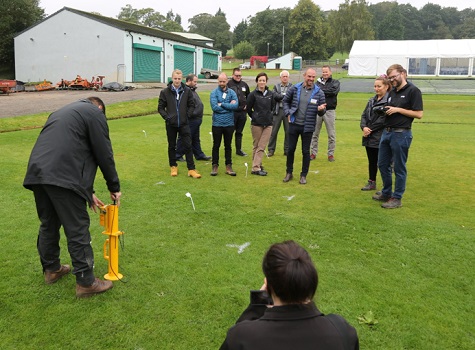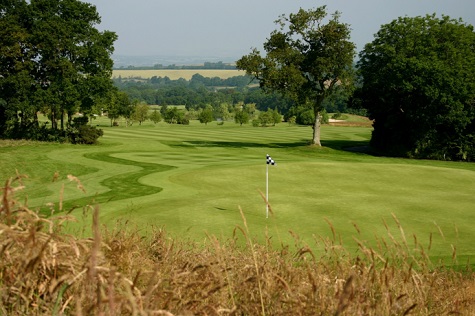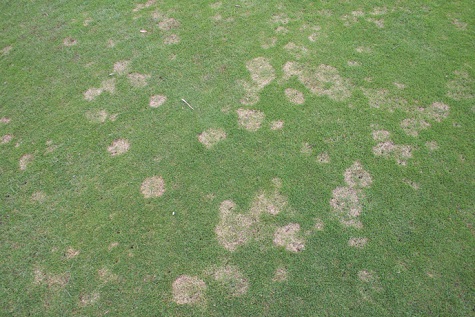
In the first of this series of articles, we sought to get a clearer definition of what sustainability is and what it means to an organisation, especially in the amenity horticulture sector. Sustainability comprises three pillars or components namely economic viability, environmental protection and social equity. The definition of these is important when any organisation seeks to become more sustainable, or indeed seeks to deliver more sustainable products and services to its customers. The remaining articles on this subject will now look more closely at various sub sectors of, and activities in amenity, and those providing services to them which hopefully will help all readers in their own search for sustainability. Previously we considered Sustainability In Practice, Sustainability At The Sharp End, Sustainability In Supply and Managing Weeds Sustainably.
This month we look at the areas of innovation, research and trial work and explore how sustainability is driving the direction of this important work.
Having spoken to a wide range of people directly involved in research and trials work, relating to the amenity sector, it is clear that currently a key focus is sustainability. As one senior trials worker puts it, we are seeking to achieve similar results but in a more sustainable manner. This can translate itself in many ways. One example is seeking to achieve desired outcomes with less inputs by use of bio stimulants, improved plant health and achieving greater nutrient efficiency. In essence, when it comes to managing amenity and turf spaces sustainably, it involves taking a more holistic integrated approach, based upon informed and positive husbandry, and making use of all the tools available, so outcomes are not compromised but more sustainably achieved.
Important research is on going at specialist research centres and our universities investigating the genetics of plants, implementing techniques such as genome editing, reducing susceptibility to disease or to enhance healthy growth, and, as mentioned, utilising bio-stimulants. These seek to influence internal processes allowing the plant to do better and become more attuned to combat pathogens and extreme growing conditions. This work seeks to re-think traditional practices and identify new approaches. A key factor of course in this is adapting to climate change and seeking to enable plants to deal with the increased stress caused to them.

One area in which this is particularly important is water with increasing times of drought and abundance. Research and trials work related to this for example at the STRI is really interesting, involving exploring further techniques in the use of surfactants, water storage and sub surface irrigation. In turf, the initiative launched by the Royal and Ancient a few years ago, is proving a very important driver, not just in stimulating and resourcing research and trials, but, perhaps most significantly, creating a pro-active discussion by all involved. For example, those directly engaged in turf management are at the sharp end and very much in a push pull situation. They recognise the need for more sustainable practices yet continue to have demand from users for high quality surfaces fit for purpose. Everyone wants to be more sustainable; it is just how it best can be achieved. Research is being geared to help us with this.

Policy changes also drive innovation. New regulations concerning fertilising products are driving significant changes in the supply of fertiliser, bio-stimulant and soil conditioning products to the sector. The new regulations are more far reaching than previous, aiming to increase the number of products available, especially from sustainable sources or utilising organic alternatives. All products must comply with regulations aiming to protect the environment and, in particular, maintaining soil quality. This has prompted much investment in the supply sector, both in re-assessing current products and in diversification. It has stimulated significant growth in controlled slow release coated fertilisers with their increased biodegradability. The aim is to enable amenity and turf professionals to improve nutrient use efficiency, a further step in providing improved sustainable practice. Equally important is the search to create a more green approach to processes involved in fertiliser manufacture and supply.
I have had the privilege of seeing first hand many aspects of this important area of research and innovation. Trial work on new practices are widespread. As one example of this, a recent visit to a research farm demonstrated the wide range of activity. Sustainable practices are at the forefront of the trials programme there. There are trials on microdochium management over autumn/winter, with a strong focus on developing non-pesticidal methods of turf management. There is also work on-going in developing best management practices for any chemical controls available, so end-users can minimise pesticide use whilst maximising disease control. Nutrient use efficiency is another key area. A number of trials have already been undertaken to understand how all who work in the amenity sector can ensure that as much applied nutrition is taken up by the plant as possible. Huge amounts of nitrogen are applied to some high-budget surfaces, but we need to ensure as little of that as possible is released into the environment. Ensuring the highest nutrient use efficiency also gives end-users the best value for money for their fertilisers.
For all those directly engaged in supplying the very best inputs for the sector, sustainability is once again a key driver. Specialist organisations define this as seeking to create professional solutions in terms of improved technology and more integrated approaches. A recent discussion with senior staff directly involved in this work looked specifically at weed, pest and disease management. Again the need for a holistic approach predominates thinking; how can we make optimum use of the tools available. How, for example, can we utilise biologicals, not as an alternative directly, but working with synthetic chemistry. The pressures to reduce pesticide use cannot be ignored and this especially applies in mainland Europe, but it is important to look at this rationally and based on facts. As a recent important independent study undertaken in the City of Cardiff identified clearly, pesticides when looked at in a full life cycle analysis way can provide the most sustainable solution in many circumstances, provided they are part of a fully integrated approach.

Most of this does require us to think outside the box. The use of nematodes to control pests is one example. It can prove very effective but requires careful and different management. It is not a direct substitute for previous practices. In another area, the important work on the control of invasive weeds, undertaken by Advanced Invasives, based at their Swansea site, has provided clear analysis and evidence based information examining trials of different strategies for managing invasives, an increasing challenge impacting on society. Whilst the use of glyphosate is key to the solution, and generally remains the most effective and efficient, related research both pure and applied linked to the site is creating new ways of thinking and potential solutions for the future.
What is clear from all of this is that there is a great amount of innovation, research and trials on going and, in many situations, amenity is leading the field. There is perhaps a greater need for co-ordination and certainly for resourcing. I would urge all our policy makers to give more priority to amenity and turf in research planning and funding. The message as always is that achieving greater sustainable practice is not a big bang approach but requires a series of small steps. It is recognising that sustainable practice is in fact best practice and that, in many situations, sustainable practices are already part of the management of turf and amenity spaces.
The key in all of this is taking an open mind and being prepared to change and be aware of innovation and what it can offer. My mind goes back to 1968 when I was at the start of my degree course in agriculture. As part of the introduction to the three years, I met with the professor in agricultural botany who asked me why I had enrolled on the course. I told him that I wanted to learn. His reply was, well that might be so, but the key purpose of our teaching will be to make you think. There is a good lesson for all of us in this. In seeking to adopt more sustainable practice and still set the highest standards in turf and amenity management, the role of research and those involved with essential trials work is paramount.
"Research is to see what everybody else has seen and to think what nobody else has thought" - Albert Szent-Gyorgyi.
The next article in this series to be published in July will look more closely at the role of life cycle analysis in determining sustainable practices and the importance of fully considering carbon foot printing in management decision making. This will be followed by an article focussed on skills and training in sustainable practice.